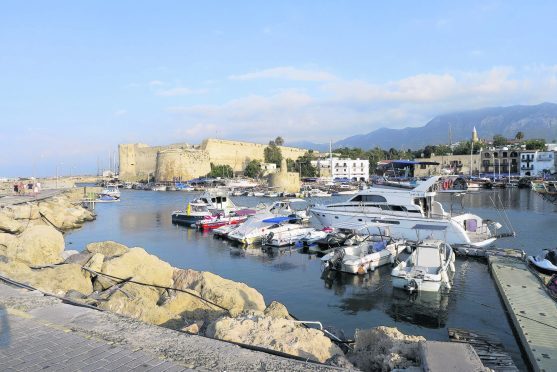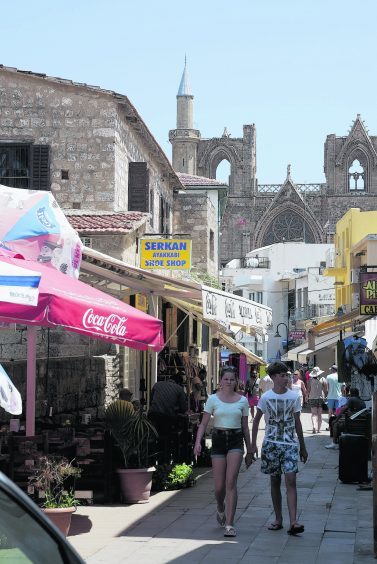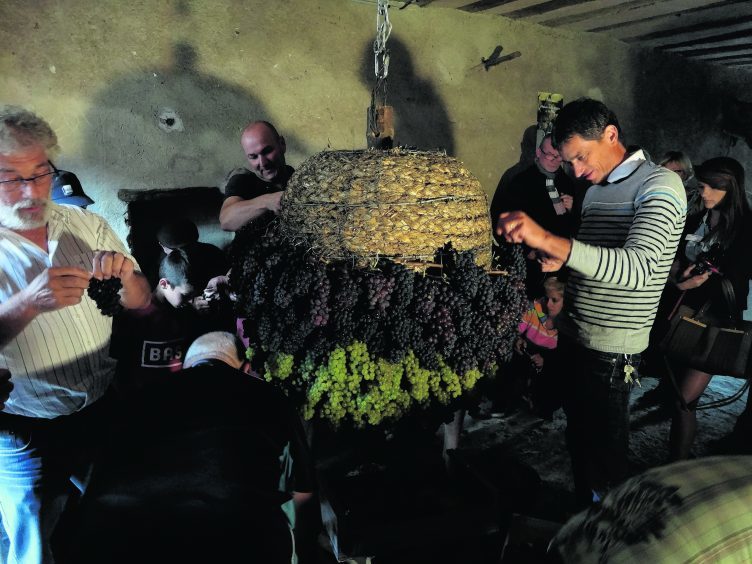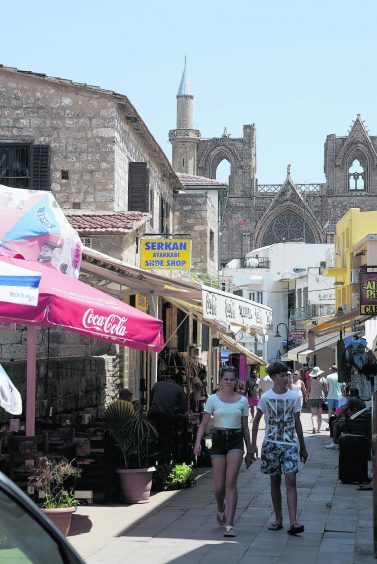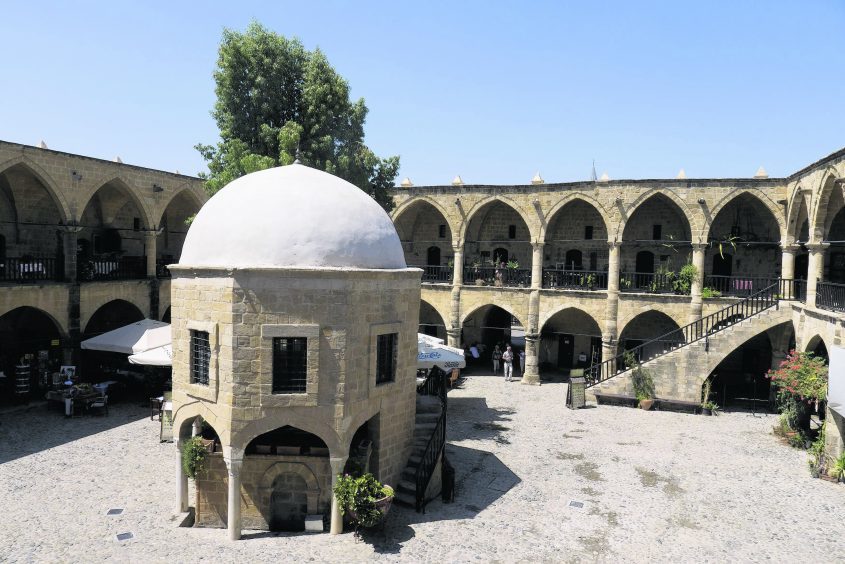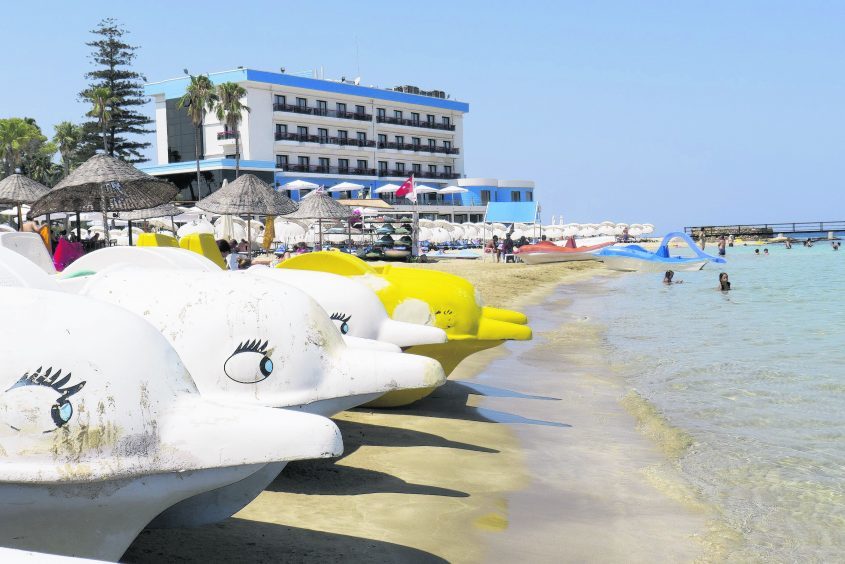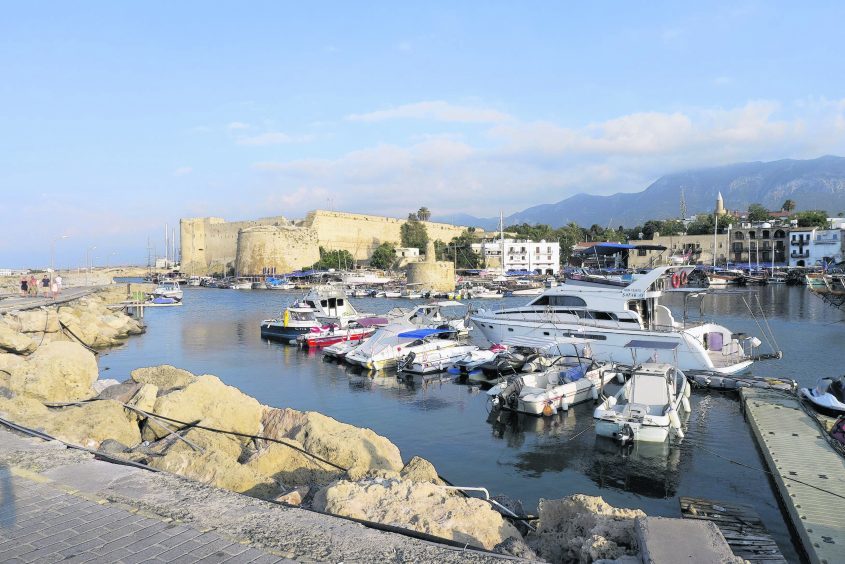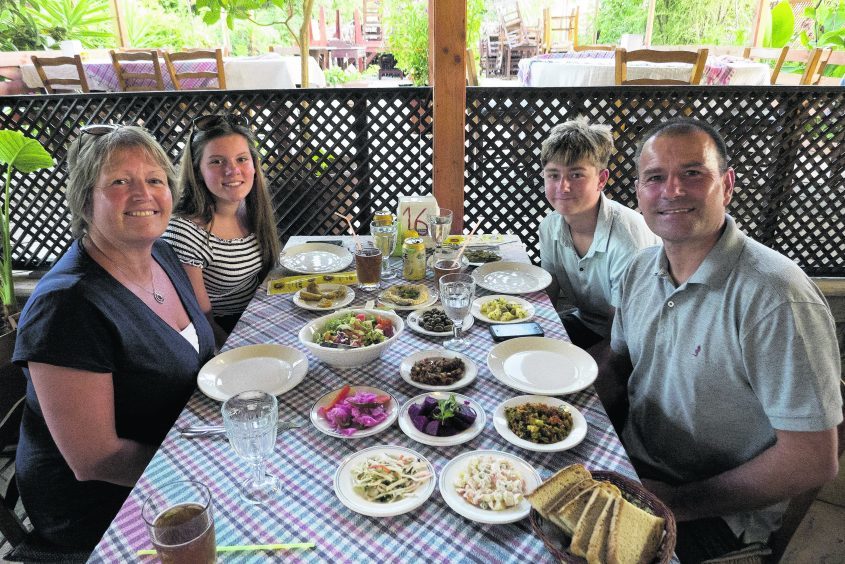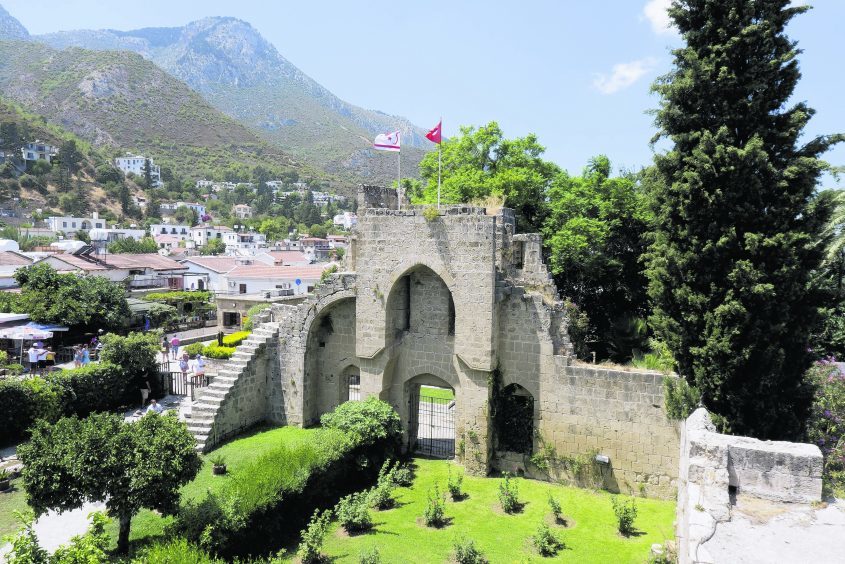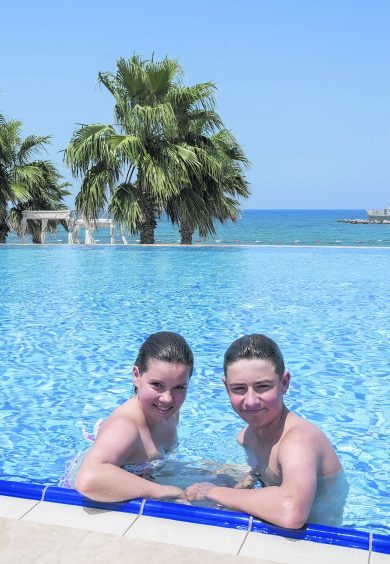Standing at the checkpoint in Nicosia, the last divided city in the world where the buffer zone, or Green Line as it is known, separates north and south Cyprus, there’s an air of informality as a group of policemen chat to passers by.
With trepidation, I show my passport to an official at the kiosk to cross the border, opened in 2003, from north to south Cyprus. There are now seven checkpoints across this Mediterranean island, but it’s a pretty relaxed setting considering the years of unrest which have pervaded it.
The south side has a commercial feel to it. In the first street I enter, I come across Debenhams, McDonald’s, Starbucks and other familiar high street shops. I pay in euros and it feels like a European holiday destination.
The northern side seems quieter, poorer and somehow more authentic. I pay in Turkish lira and it’s cheaper.
Rewind to the early 1970s and the atmosphere at the checkpoint would not have been so relaxed. This border is the setting of the climax in Victoria Hislop’s latest novel The Sunrise, where Turkish Cypriot and Greek Cypriot friends and compatriots are forced to part because of a conflict which is out of their control, and remains unresolved today. The Greeks cross to the south, the Turks remain in the north.
The conflict came to a head in 1974 when Turkey invaded northern Cyprus to foil a coup by Greek-Cypriot nationalists who wanted union (enosis) with Greece and independence from Britain. Violence erupted on both sides but the invasion left the Turkish Cypriots in a state of political limbo.
Today, the Turkish Republic of Northern Cyprus doesn’t exist officially.
Aside from Turkey, no other nation acknowledges its existence. There’s a ban on direct flights to Northern Cyprus from anywhere other than Turkey. Visitors have to land there first, usually in Istanbul. Development in tourism has been slow, yet that brings advantages for the tourist.
Northern Cyprus is less commercial than its southern neighbour. Many British tourists have been coming here for years, escaping the crowds of the busier Turkish resorts and loving the hospitality shown by the Turkish Cypriots.
A major marine turtle conservation project on Northern Cyprus is also a big pull for eco-friendly visitors.
Venturing away from the main tourist hub of Kyrenia towards the north east, I take a step back in time, as we come across tiny villages, deserted beaches and even rub shoulders with the native wild donkeys.
The Karpaz Peninsula boasts miles of unspoilt Mediterranean coastline until we come across swanky developments such as the Karpaz Gate Marina, a swish new public marina with infinity pool, sophisticated menu and chic showers and changing rooms.
Conversely, there is plenty of ancient history to explore, which remains unsullied by tourism. We wander around monasteries, churches and castles in relative peace and quiet, even at the height of the season, and find free tables at cafes serving traditional home-made lemonade, made with fresh mandarins and lemons.
Hislop’s novel is set largely in Famagusta on the east side which was THE place to be in the Mediterranean in the 1960s and early 1970s, as a string of luxury hotels sprang up along its stunning beach. The book sees a glamorous hotel open, staffed by both Greek and Turkish Cypriots.
In the early 1970s, Famagusta had a population of 35,000, predominantly Greek Cypriots, and a sparkling future as a sizzling tourist resort. But when the Turks invaded in 1974, it was evacuated and captured by them for future negotiations.
Today, the beach at Varosha, a suburb of Famagusta once known as the ‘Monte Carlo of the Middle East’, still harbours the fine white sand and crystal clear waters which made it such a magnet for tourists – but the once glamorous seafront hotels form a skyline of derelict, abandoned buildings in what has become a ghost town.
At the tip, there’s a stretch of beach near the beautiful Palm Beach Hotel which is still accessible, where we see holidaymakers swimming, snorkelling and taking out pedalos as you would on any other European beach.
But the backdrop of bombed-out buildings, the fences and ‘Forbidden Zone’ warning signs, is a stark reminder of its past.
Varosha remains a weird remnant of history, a surreal relic of the conflict, and one worth visiting for its eeriness and the unique juxtaposition of its landscape.
Away from Varosha, Famagusta retains an unhurried feel, its old walled town steeped in Middle Eastern history, with its Venetian city walls providing excellent viewing points and the 13th-century St Nicholas Cathedral converted to a mosque during the Ottoman reign. The city is also a great base if you want to see the major classical site Salamis, the first city of Cyprus in classical Greek times.
On the Turkish Cypriot side of Nicosia, I don’t find a string of well-known shops. Instead, I am able to lose myself in a maze of narrow streets as I make my way towards the glories of the Ottoman empire, set within the old Venetian walled city.
On another literary trail, I head for Bellapais, one of the prettiest villages on the island and home to a stunning Gothic abbey and fantastic views of the Five Finger Mountains. The author Gerald Durrell lived in this village for several years, writing about Cyprus in his book Bitter Lemons.
He mentions passing the time drinking coffee under the Tree of Idleness in the village.
I’ll find my own tree, idle away, indulge in a Turkish coffee, and hope that the tourist trail doesn’t find northern Cyprus too quickly.
Direct Traveller offers seven-nights’ B&B at the Ship Inn Hotel from £299 per person, including flights and transfers.
Atlasglobal flies daily to from London Luton to Ercan via Istanbul. Return fares including 20kg luggage and in-flight meals start from £143.
Find out more about North Cyprus at www.welcometonorthcyprus.co.uk.
